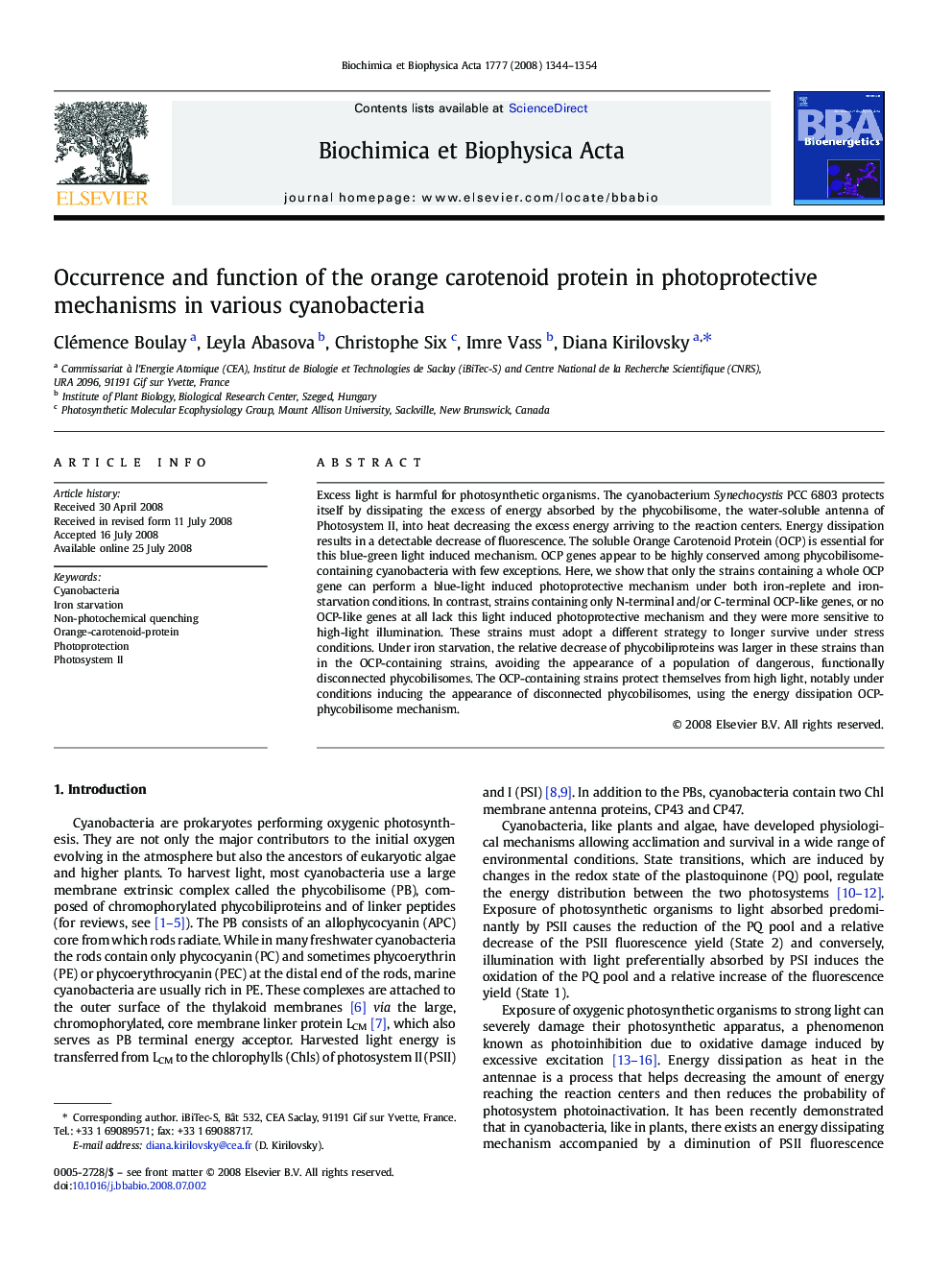| Article ID | Journal | Published Year | Pages | File Type |
|---|---|---|---|---|
| 10796047 | Biochimica et Biophysica Acta (BBA) - Bioenergetics | 2008 | 11 Pages |
Abstract
Excess light is harmful for photosynthetic organisms. The cyanobacterium Synechocystis PCC 6803 protects itself by dissipating the excess of energy absorbed by the phycobilisome, the water-soluble antenna of Photosystem II, into heat decreasing the excess energy arriving to the reaction centers. Energy dissipation results in a detectable decrease of fluorescence. The soluble Orange Carotenoid Protein (OCP) is essential for this blue-green light induced mechanism. OCP genes appear to be highly conserved among phycobilisome-containing cyanobacteria with few exceptions. Here, we show that only the strains containing a whole OCP gene can perform a blue-light induced photoprotective mechanism under both iron-replete and iron-starvation conditions. In contrast, strains containing only N-terminal and/or C-terminal OCP-like genes, or no OCP-like genes at all lack this light induced photoprotective mechanism and they were more sensitive to high-light illumination. These strains must adopt a different strategy to longer survive under stress conditions. Under iron starvation, the relative decrease of phycobiliproteins was larger in these strains than in the OCP-containing strains, avoiding the appearance of a population of dangerous, functionally disconnected phycobilisomes. The OCP-containing strains protect themselves from high light, notably under conditions inducing the appearance of disconnected phycobilisomes, using the energy dissipation OCP-phycobilisome mechanism.
Related Topics
Life Sciences
Agricultural and Biological Sciences
Plant Science
Authors
Clémence Boulay, Leyla Abasova, Christophe Six, Imre Vass, Diana Kirilovsky,
